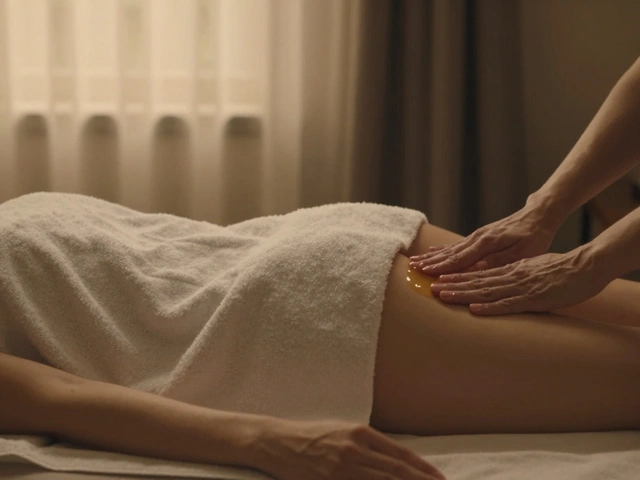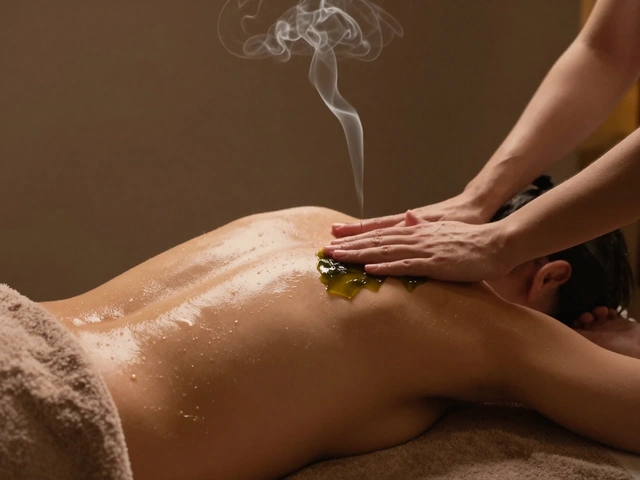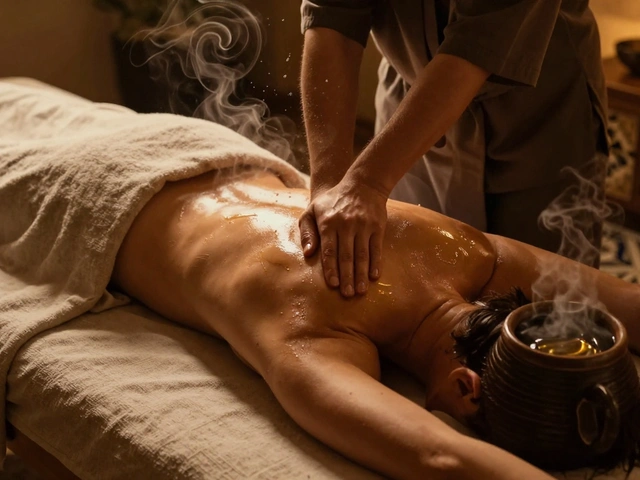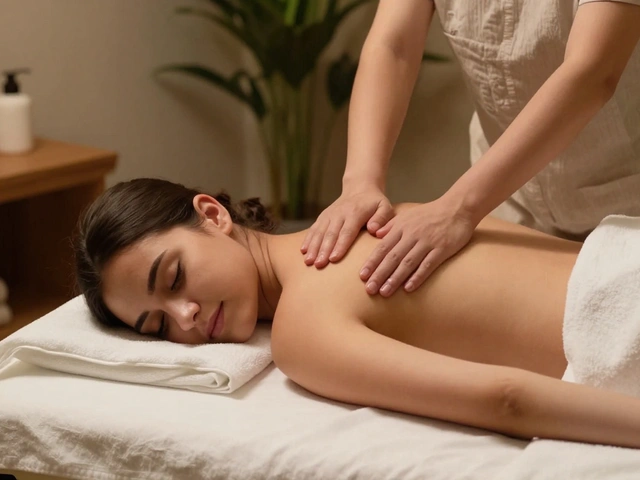Ever found yourself desperate for a break from Istanbul’s crowds and chaos? You’re not alone. Massage therapy is a lifesaver in this city, whether you’re a weary traveler, an expat, or a local on a stressful week.
Let’s get straight to it—an Istanbul massage therapist isn’t just someone who gives the usual back rub. Here, the tradition blends old-school Turkish hammam culture with modern wellness. You’ve got people trained in everything from deep tissue to relaxing aromatherapy massages, right through to the foamy, soapy magic of a Turkish bath.
But if you type “massage therapist Istanbul” into Google, it’s easy to get lost in the options. Not every spa or massage parlor is created equal. Some places cater to tourists with Insta-worthy decor and sky-high prices, while others focus on local, wallet-friendly service (often even better quality!).
My advice? Go a bit deeper than the hotel lobby spa. Neighborhood spots in Kadıköy, Beşiktaş, and even around Taksim have legit therapists who know their stuff. Want the best experience? Check reviews but also look for places certified by Turkish health authorities—most good therapists proudly display their credentials.
You don’t need to speak Turkish to book a massage. Most popular spots have staff who speak enough English to help you out. And if you’re nervous about something specific—like injuries, body insecurities, or worries about privacy—just mention it when you book. Istanbul therapists tend to be super accommodating once you voice what you want.
If you’re after genuine relaxation, muscle pain relief, or just a chance to shut your mind off for an hour, you’ve come to the right city. Next up, let’s break down the different types of massages you’ll find in Istanbul and how to pick the best one for your needs.
- Key Takeaways
- Quick Answer: Istanbul Massage Therapists
- What is an Istanbul Massage Therapist?
- Top Benefits of Visiting a Massage Therapist in Istanbul
- Popular Types of Massages in Istanbul
- Tips for Finding and Booking a Great Massage in Istanbul
Key Takeaways
Looking for a relaxing experience in Istanbul? Here’s what you need to know to get the most out of your visit with an Istanbul massage therapist:
- Traditional Turkish massages—especially in hammams—are a big deal here, with roots going back centuries. Expect a mix of muscle work, hot steam, and lots of bubbles.
- Modern and international massages like deep tissue, Swedish, and aromatherapy are just as available in spas across the city. You’ll find options at every budget.
- Certified therapists usually have their licenses on display. This is your cue that they’re trained and safe to book with.
- Language isn’t a huge barrier at popular spots. Most places with high ratings on Google and TripAdvisor have English-speaking staff.
- Popular neighborhoods for massages include Sultanahmet (near tourist hotspots), Kadıköy (Asian side, younger crowd), and Beşiktaş (lively, local vibe).
- Anyone can access these services regardless of age or gender, but some traditional hammams still have separate times for men and women.
- Prices range widely, from 500 to over 2000 TL ($15-$65, as of June 2025), depending on the location, type of massage, and the reputation of the spa.
| Massage Style | Typical Duration | Average Price (TL) |
|---|---|---|
| Turkish Hammam | 60 mins | 900-2000 |
| Deep Tissue | 55 mins | 600-1500 |
| Swedish | 50 mins | 700-1300 |
| Aromatherapy | 45 mins | 500-1000 |
Last tip: Always check reviews and ask if taxes or service fees are extra. That way, you know exactly what you’re paying for and won’t get any awkward surprises.
Quick Answer: Istanbul Massage Therapists
If you're short on time, here’s what you really need to know about finding an Istanbul massage therapist. First, Istanbul is packed with massage services, ranging from luxurious hotel spas to neighborhood wellness centers. Whether you want the classic Turkish hammam experience or need targeted muscle relief from a pro, it’s all here.
Therapists in Istanbul usually have real training—many are certified by the Ministry of Health or local health boards. Istanbul’s biggest neighborhoods for massage services tend to be Şişli, Kadıköy, and Beşiktaş. Expect staff to speak basic English in most popular spots, although some smaller places focus mainly on locals.
The types of massage offered often include:
- Traditional Turkish massage (many locations have a hammam on site)
- Deep tissue and sports massage for people with muscle pain or active lifestyles
- Swedish and relaxation massages (gentle, great for stress)
- Aromatherapy and hot stone treatments for a total chill-out
Prices are generally lower than many big cities in Europe or the US. Most sessions last an hour, but 30 and 90-minute options are common. Want to pay by card? Most reputable places allow this, but it’s always good to ask when you book just in case.
Here’s a quick look at typical pricing and time slots:
| Massage Type | Average Price (TL) | Typical Duration |
|---|---|---|
| Turkish Hammam | 600 - 1,200 | 60-90 min |
| Deep Tissue | 750 - 1,500 | 60 min |
| Relaxation/Swedish | 500 - 1,200 | 60 min |
| Aromatherapy | 650 - 1,400 | 60 min |
Quick tips? Book in advance if you want a late slot or a female therapist—both get snapped up fast. And always check reviews on Google Maps or Tripadvisor before committing. Istanbul’s best massages aren’t always the fanciest—they’re the ones with happy repeat customers.
What is an Istanbul Massage Therapist?
So, what makes an Istanbul massage therapist different from any other massage expert? It’s not just about rubbing tired muscles or laying out some scented oils. These therapists blend Turkish tradition with modern techniques, creating a style you don’t really find anywhere else.
First, let’s clarify what they do. In Istanbul, most massage therapists are trained in a mix of classic Swedish and deep tissue methods, plus the famous Turkish hamam (bath) rituals. The classic hamam massage, called kese, is an exfoliating scrub that leaves your skin squeaky clean and crazy smooth. On top of that, many therapists also know aromatherapy, reflexology, or sports massage, so you have loads of options.
Here’s what stands out:
- Turkish massage therapists often train for several years and need official certificates from health authorities.
- Many work in licensed spas, wellness centers, and even historic hamams (some date back to the 16th century).
- Expect a mix of ancient and modern—oil massages, foam massages, back walking, foot reflexology, and sometimes even traditional cupping.
In Istanbul, being a legit massage therapist means more than having strong hands. These folks know how to work with stress, muscle knots, and even medical issues like chronic pain. Many locals book regular sessions, not just as a treat but as part of their wellness routine.
| Training | Usually 400+ hours, with certifications from Turkish health boards |
|---|---|
| Popular Techniques | Turkish hamam massage, deep tissue, aromatherapy, reflexology |
| Typical Workplaces | Spas, hotels, historic hamams, wellness centers |
| Languages Spoken | Turkish, English (many therapists in tourist areas are multilingual) |
| Sessions Per Week (Local Favorite) | 2-4 sessions for regulars; tourists often book once or twice |
Bottom line: If you want more than just a basic massage, Istanbul’s therapists have you covered. They tap into centuries-old wellness techniques but keep up with the latest trends. Experience can be very local and very personal, whether you’re after silk-skin from a hamam scrub or deep muscle relief from a pro who’s seen it all.

Top Benefits of Visiting a Massage Therapist in Istanbul
If you’ve ever wondered what sets an Istanbul massage therapist apart, the answer goes way beyond just kneading sore muscles. Istanbul is basically a crossroads of East and West, and you can feel that in the massage options. Therapists here mix ancient Ottoman and Turkish traditions with modern techniques, so your body gets the best of both worlds.
Let’s get real about what these sessions can actually do for you:
- Stress Meltdown: Turkish massage is famous for its relaxing effect—think steamy hammams and slow, expert pressure. It can drop your stress levels fast. According to the Turkish Ministry of Health, over 72% of people who get regular massages here report a boost in mood and better sleep.
- Muscle Recovery: Whether you’re an athlete, lost in Istanbul’s hills, or just jetlagged, local therapists know how to target sore spots. Sports massage and deep tissue techniques are super popular, especially around sports clubs in areas like Beşiktaş or Şişli.
- Pain Relief: Massage can help with chronic pain—shoulders, neck, lower back—especially in a city where everyone is either hunched over laptops or stuck in traffic. Some clinics even partner with doctors to help with recovery from injuries.
- Immune System Boost: Turkish bath massages increase circulation, and that’s linked to better immune system performance over time. It’s a local tip: people here swear by hammam rituals right before winter kicks in.
- Better Flexibility: Traditional techniques, like stretching during a Thai or sports massage, aren’t just for relaxation—they actually help you move better, perfect if you’re schlepping around the city or traveling with a heavy bag.
Check out this quick breakdown to compare just how much value you get out of a session in Istanbul:
| Benefit | Typical Result | How Fast? |
|---|---|---|
| Stress and Mood | Feeling lighter, improved mood, better sleep | 1-2 sessions |
| Muscle Pain Relief | Reduced soreness, less stiffness | Right after one session |
| Better Flexibility | Improved movement, less tension | 2-4 sessions |
| Stronger Immunity | Higher energy, fewer colds | After regular visits (monthly) |
Bonus: Massages in Istanbul often cost way less than in most western cities, so you can treat yourself often without blowing your budget. Locals do it—it’s part of the culture, not just a luxury splurge.
Popular Types of Massages in Istanbul
You’ll spot all kinds of massage places in Istanbul, but certain styles really stand out for locals and travelers. Let’s break down what’s hot and trending—plus what you should actually try.
- Istanbul massage therapist services almost always include the Turkish Hammam (bath). This is the classic: you get a full-body scrub with an exfoliating glove (called a kese), then tons of foam, and a super-relaxing soap massage on a warm marble slab. It’s not just about relaxation—it’s also a deep clean you’ll definitely notice. Hamams date back to the Ottoman Empire and are still a weekly ritual for some.
- Swedish Massage has its fans here too. Think of it as the go-to for stress and tension relief—long, gentle strokes, perfect if you want to unwind after wandering the Grand Bazaar.
- Deep Tissue Massage is popular with locals who work long hours or anyone with tight muscles. This one gets right to the knots but can be a bit intense if you’re sensitive. Therapists trained in this are usually easy to find in bigger spas or hotel wellness centers.
- Aromatherapy Massage adds scented oils to the experience, using calming smells like lavender or energizing citrus. Ideal if you want to chill out without falling asleep on the table (it happens more than you think!).
- Thai Massage isn’t originally Turkish, but Istanbul has a dozen spas run by Thai therapists. It’s active—expect stretching and some firm pressure, almost like yoga but you don’t have to do any of the work.
- Sports Massage is getting more popular, especially with expats and folks training for Istanbul’s marathons or cycling races. These target muscle recovery and help prevent injuries—great if you’re here for an active trip.
Curious how common each option is? Here’s a quick look at what most spa menus offer around the city:
| Massage Type | Availability in Istanbul (%) | Typical Duration (minutes) |
|---|---|---|
| Turkish Hammam | 95 | 60–90 |
| Swedish Massage | 85 | 50–75 |
| Deep Tissue | 78 | 60 |
| Aromatherapy | 65 | 50–90 |
| Thai Massage | 40 | 60–90 |
| Sports Massage | 25 | 30–60 |
If you’re not sure which one fits your mood (or your aches), ask your therapist. They’ll usually tell you straight up what works best for jet lag, muscle soreness, or just plain old burnout.
Tips for Finding and Booking a Great Massage in Istanbul
If you’re looking for a Istanbul massage therapist, the search can feel a little overwhelming thanks to the city’s endless options. But a smart approach makes all the difference—you want relaxation, not extra stress! Here’s how to get the best experience possible.
- Read Reviews (and Look for Local Voices): Check Google Maps, TripAdvisor, and Instagram. Real local reviews are gold, since some spots hype themselves up for tourists but don’t deliver. Try keywords like “hamam,” “masaj,” and “spa Istanbul.”
- Ask About Qualifications: Legit massage therapists in Turkey must have either a certification from the Ministry of Health or be employed at licensed spas. Don’t be shy—just ask. A certified therapist cares about your safety and the quality of your massage.
- Check Location and Ambience: Target neighborhoods known for trusted wellness centers. Kadıköy and Beşiktaş have tons of local places, while Sultanahmet and Taksim skew touristy and pricier.
- Use Official Websites or Trusted Apps: Many legit spas now offer online booking. Try apps like Zenia or the ÇiçekSepeti app’s wellness section. Booking in advance is pretty normal, especially on weekends.
- Be Clear About What You Want: When booking, mention if you want a Turkish bath, sports massage, aromatherapy, or combo package. The more specific you are, the easier it is for the therapist to prepare and for you to get what you’re after.
- Ask About Extras and What’s Included: Does the price cover towels, slippers, shower facilities, or even tea after your session? No one likes hidden surprises.
- Check for Female Therapists (if you prefer): Most places let you choose, and this is common to request, especially for women or families.
For a clearer idea, here’s how different parts of Istanbul stack up for booking massage therapy:
| Neighborhood | No. of Spas* | Avg. Price (1 hour, TL) | Tourist Friendly? |
|---|---|---|---|
| Kadıköy | 43 | 1200-1800 | Yes |
| Beşiktaş | 38 | 1300-2000 | Yes |
| Taksim | 25 | 1500-2500 | Very |
| Fatih/Sultanahmet | 29 | 1400-2200 | Very |
*Spas and wellness centers listed on major booking sites as of spring 2025.
- Walk-ins are common, but it’s always smarter to book ahead, especially for evenings and weekends.
- Most good spas accept credit cards, but smaller neighborhood places often want cash. Always ask up front.
- If you have your heart set on a hammam experience, book your “scrub and bubble” treatment at least a day before—popular spots fill up.
And one last thing: don’t feel pressured to book the most expensive service. Istanbul has amazing therapists across all budgets. Relax, do your homework, and you’ll find exactly what you need.





